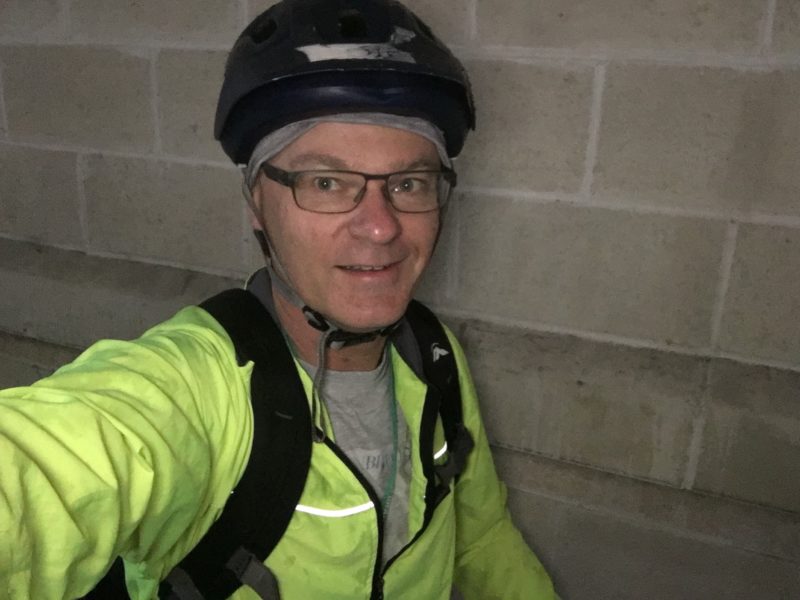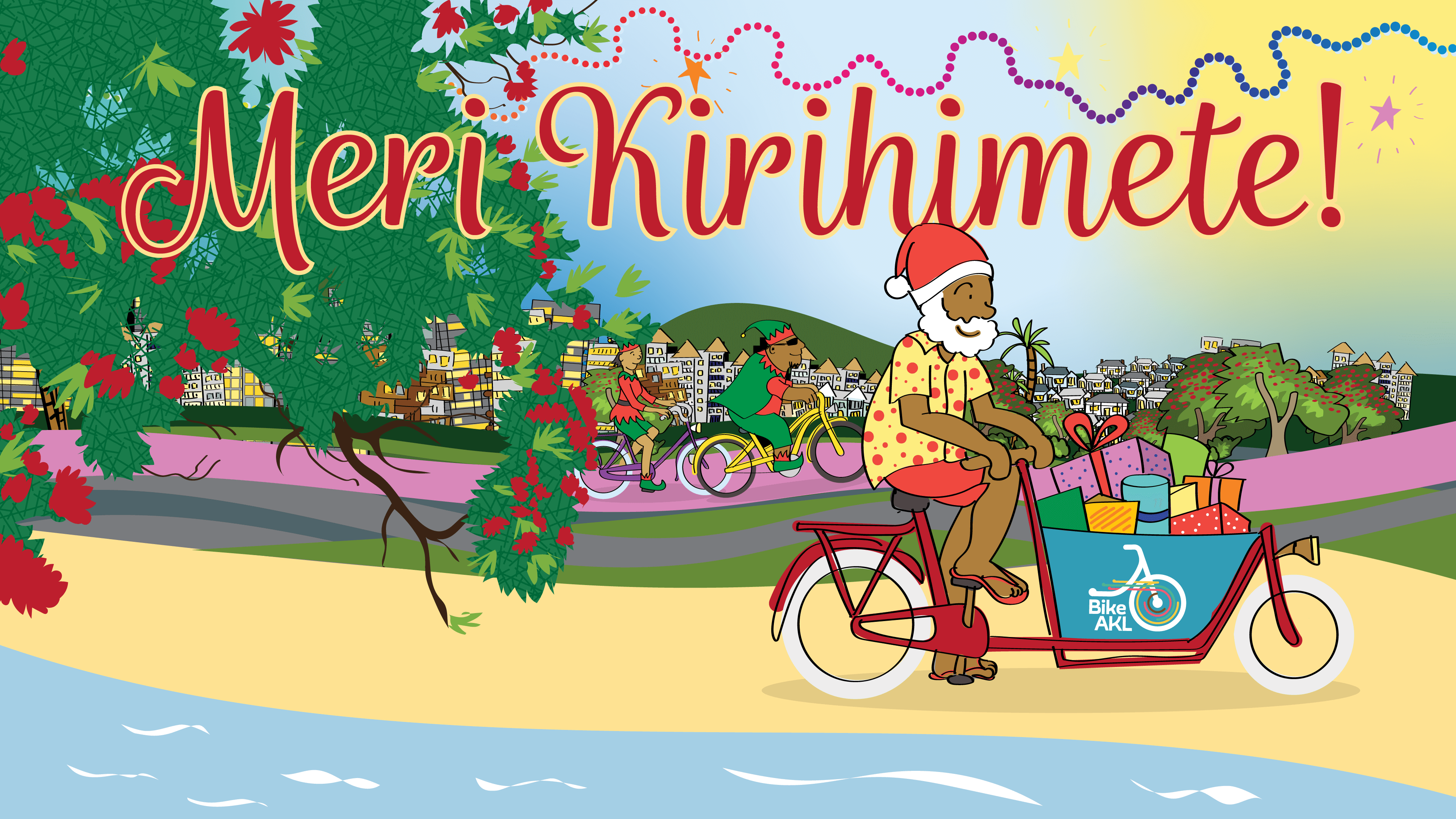Middlemore Hospital has been much in the news lately. The health centre at the heart of the isthmus, it sits at the heart of a health-challenged community, many of whom suffer what Dr David Galler calls “the South Auckland full house, ‘a six-card hand of obesity, diabetes, heart disease, hypertension, chronic kidney disease and gout’.”
Middlemore is also home to a naturally health-conscious workforce, several of whom make a point of biking to work – while many more would, if it felt safer to do so. Anaesthetist Rob Burrell is one who counts himself lucky to bike to Middlemore, despite the lack of decent infrastructure. He shares his commute with us in a guest post, below.
As an affordable, healthy, and reliable way to get around, riding a bike should be a natural option for people of all ages in South Auckland. But hostile streets create barriers to freedom of movement, and discourage people from walking and biking. Few people bike to or around Middlemore, even though the terrain is flat, the roads are wide, there are large schools in the immediate vicinity and more young people than average.
Safety is also a huge and growing concern, with four recent pedestrian deaths in less than two months on South Auckland’s streets: Vainemoeroa Titaenua (71) on 29 March; Taylor Charles King (23) and Jeremy Tokotai Kaukasi (34) on April 14, and a woman killed on Robertson Rd on 16 May at a spot long identified by locals as dangerous (her name and age have not been made public).
This guest post from Rob Burrell underscores the need for safer streets in South Auckland – for public health, safety, transport equity, and all-ages access; and for kids, the elderly, the workforce and the community at large. Rob’s story also echoes the urgent call by Councillor Efeso Collins for the benefits of the Regional Fuel Tax to be directed towards those who need it the most. We agree: you cannot care for the future of Auckland without caring for South Auckland right now.
Rob’s City-to-Middlemore commute: A photo story
I travel from Newmarket to Middlemore most days, and by bike as often as I can. I’m lucky. The train from Newmarket is an easy rainy-day alternative, but it’s not the same, is it?
Middlemore is a huge employer, every day and night of the week, but not many of us get there by bike. I think some strategic safety improvements to the streets could get lots more people on their bikes, where we belong.
Here’s what my commute looks like. If I leave by 7am, I can ride the 15km to work and be showered and working by 8 (coming home is always a bit slower, because it’s uphill and at the end of the day).
With lights on, I leave my place, and pretty soon I cross the western train line on Kingdon St. This involves riding through a pedestrian crossing, but things are pretty quiet here this time of day. Soon, I’m turning left onto the bottom of Khyber Pass – using the bus lane, which isn’t so bad, because you’re not sharing it with cars.
Then it’s right onto Broadway, which really isn’t nice, with bus stops, 2 lanes of traffic, parked cars, and nowhere to be but amongst it on the bike. My route will take me through the oasis of Cornwall Park… but before I can enjoy that green breathing space, I must negotiate the five-road intersection to get onto Manukau Road. Manukau Road narrows suddenly past the intersection, there are grates and broken guttering, and it really doesn’t feel very safe.
Turning left into Cornwall Park at Campbell Crescent is a relief, and along Puriri Drive it’s smooth and flat and I can ride into the morning sun, if it’s up. Then across the lights at Green Lane West – which fortunately have sensors that pick up bikes (well my chromoly 3-speed, anyway). Getting into Cornwall Park before 7am means negotiating a pedestrian passageway, but after 7am it’s open for traffic, of which there is very little, and so I sail through the gates. It gets really nice along Twin Oak Drive, a slight incline, then I enjoy a fast coast down Grand Drive to a roundabout on Campbell Road.
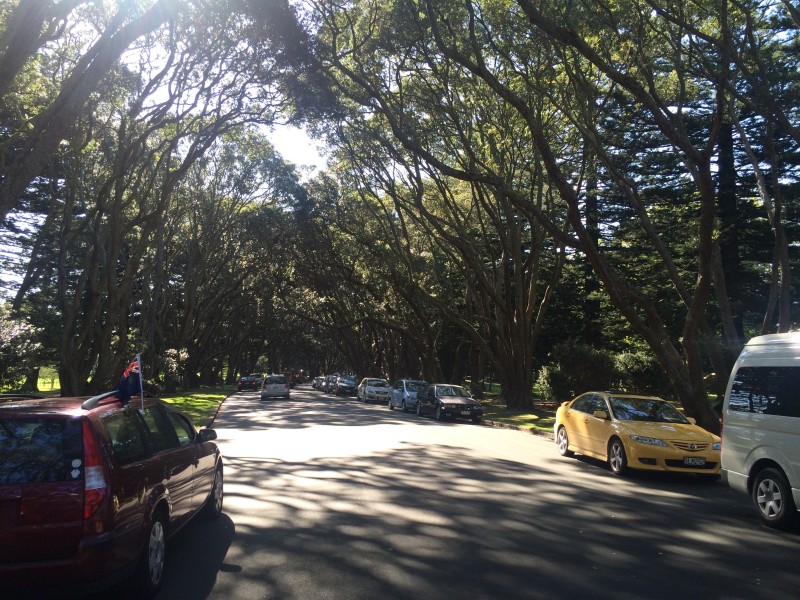
Sometimes the roundabout takes a bit of negotiation, but usually it’s a quick ride down Onehunga Mall, across a couple of sets of lights, and down through the Mall proper. At this point, my bike moves as fast as the cars do, so it’s a matter of holding my line, and watching out for idiots who pull out without looking after stopping to buy their lunch on their way to work.
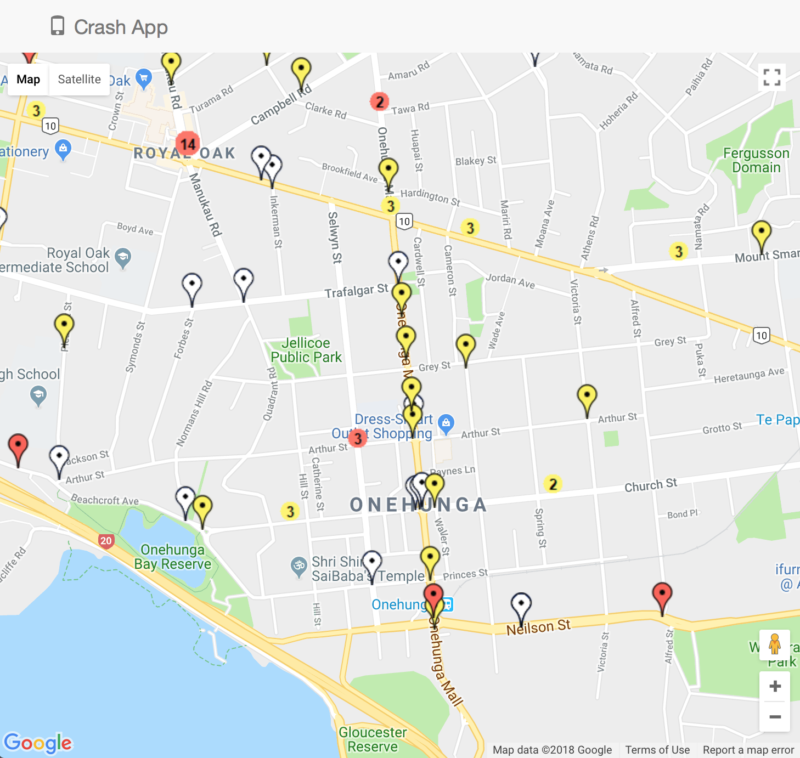
There’s a set of lights at Neilson Street, and sometimes I meet up here with other people on bikes. I don’t think any of us like this spot much: there are buses, the road is 3 lanes wide, and we stand out in the middle of it because we’re going straight ahead. And it’s usually around here, too, that glass on the road is unavoidable, as is a really nasty pinch in the road past the lights.
We share the road with cars here – I’ve learned not to trust drivers’ intentions, and to always expect the unexpected – and lots of buses too. The bus drivers I have found to be universally sensitive to the tight squeeze, where bus, bike, concrete bollards and curbs are all too close together, and there’s glass on the asphalt. The professional drivers are generally great, but there is zero room for error, and I would really love to see something done about this piece of busy road.
The next part of my ride is over Old Mangere Bridge. Bliss. In the afternoon, there are kids playing and people fishing. In the morning, maybe some guys launching a boat for a weekday fishing trip.
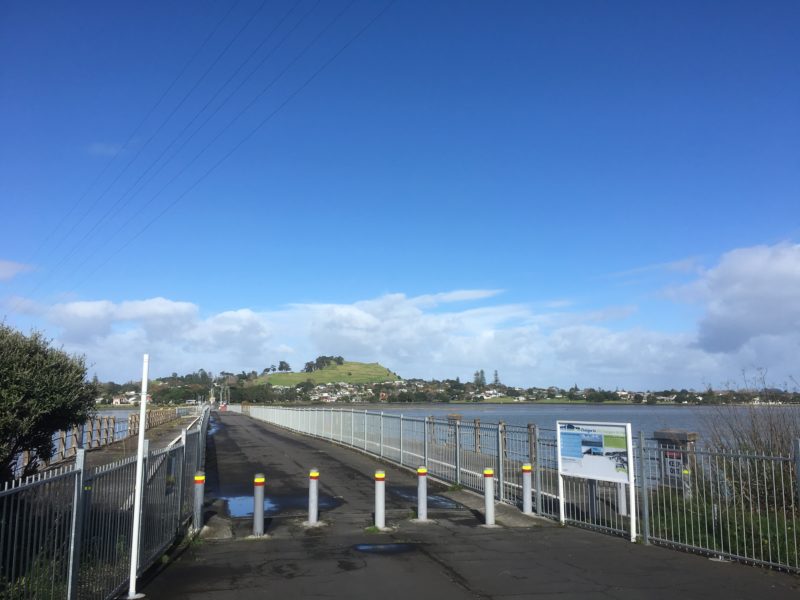
Crossing the harbour on the old bridge is a wonderful part of my commute, which segues into a bit of bike path under the new bridge, and onto Mahunga Drive. (You can go the other way, over the motorway, but the lights there do NOT respond to a bike, even when I press the special bike button, which I don’t think is connected to anything. Who installed that?)
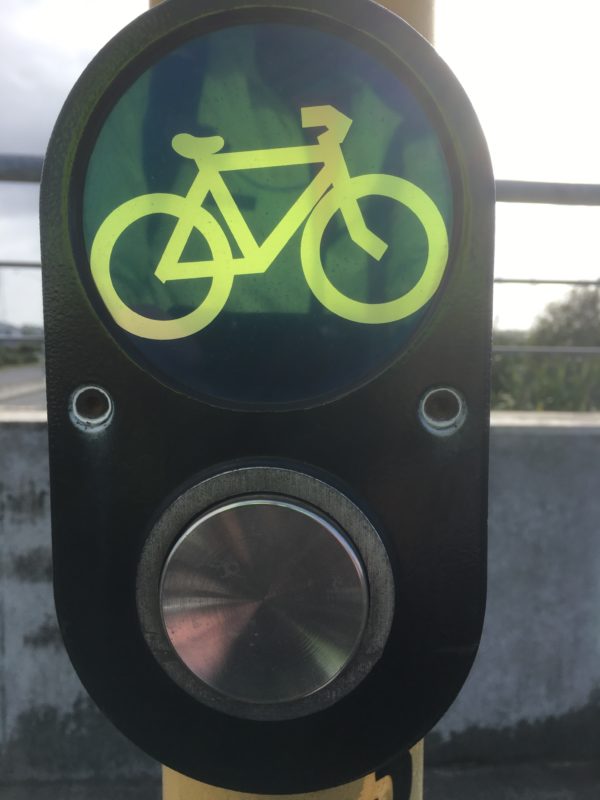
Mahunga Drive is fairly wide, and involves a wee climb, with an intersection to negotiate right when I am at my slowest. There’s room here for a separated bike path – but as in most of South Auckland, there is no consideration for bikes.
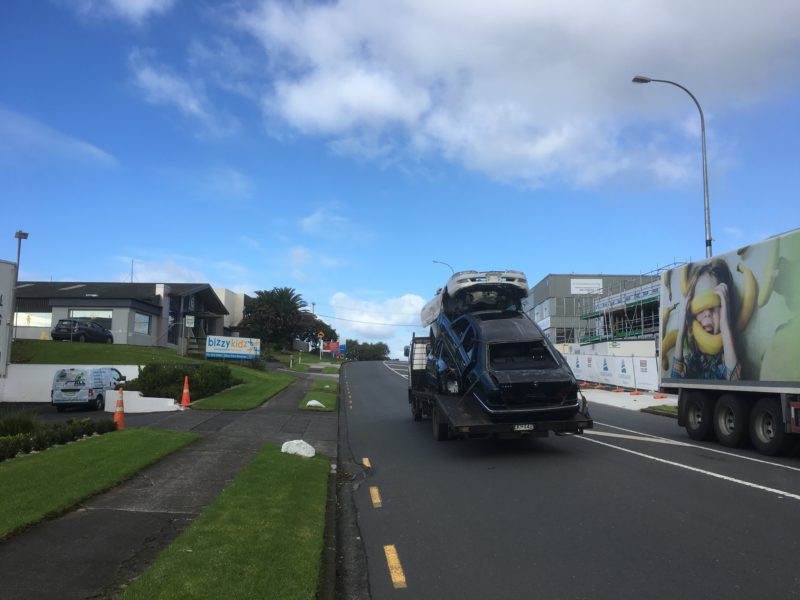
I turn left at a nasty give way onto Walmsley Road, then onto Favona Road by cutting over the footpath. I have waited at the lights like a good boy in the past, but I won’t do it again: just after the lights, the road curves left and narrows sharply, and big trucks cut across my line. I’ve been burnt here once too often by scary near misses. Only a cyclist could see how awful this piece of my journey can be.
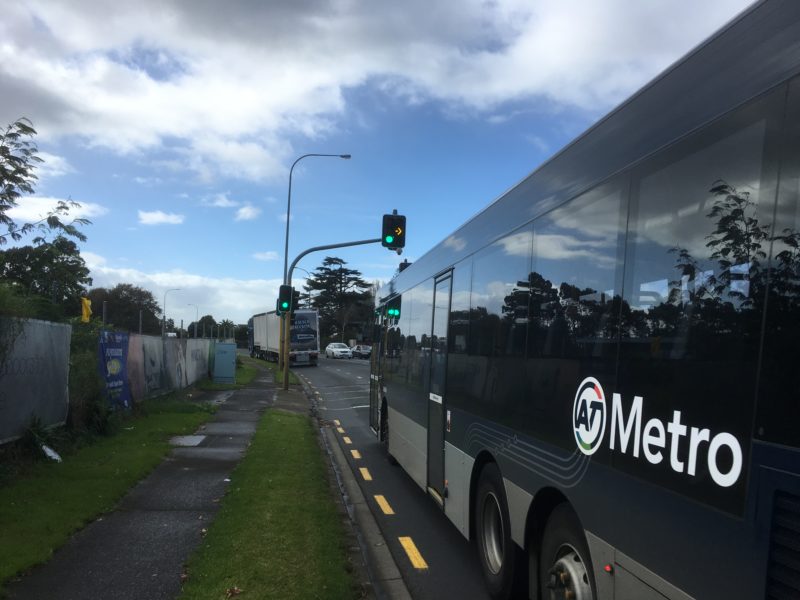
The rest of the ride along Mahunga Drive is usually OK, but it finishes with a right turn at traffic lights, leaving me sitting exposed in the road, as traffic passes on my left doing well over 50. Some traffic engineering here might be able to help.
Saville Drive is wide, mostly flat, and usually a doddle. However, I can’t forget one morning when a truck driver drove straight at me, despite all my lights and reflective gear. The look on his face as I passed just under his windscreen said it all. He had the decency to call out an apology, but another half a metre and I would have been dead.
The last part of my commute involves turning left onto Massey Road – which is awful – followed by chugging to the top of the steep hump over the railway line, in 4 lanes of angry traffic, and then sitting in the middle of the road to make an exposed right turn into Golf Rd, to the hospital.
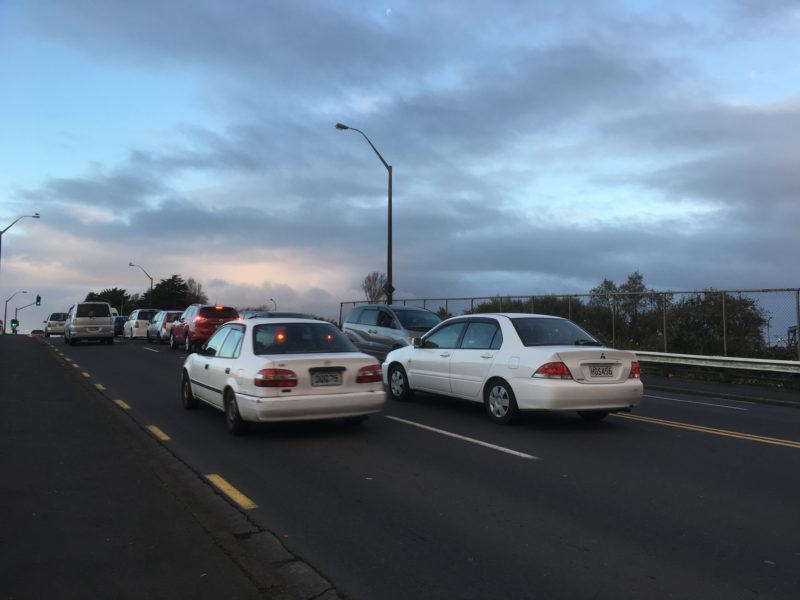
It may not be legal, but here I generally chicken out and take the pedestrian crossing and the footpath… which seems to have more glass every day. This intersection has seen hospital staff knocked off their bikes before, and I don’t want to be yet another. It’s busy, exposed, and hostile to cyclists. There is probably room for a bike path under or around this intersection, which is dangerous for bikes in all directions. It is truly nasty. No wonder I never meet kids riding into Otahuhu College, or Kings College, or nearby DelaSalle college, which are all right here.
(Ed: we pointed out the school connections just outside the scope of the recent consultation on links to the Otahuhu Train Station, too. In the new safety climate, we would expect to see AT taking advantage of every opportunity to improve safe school routes.).
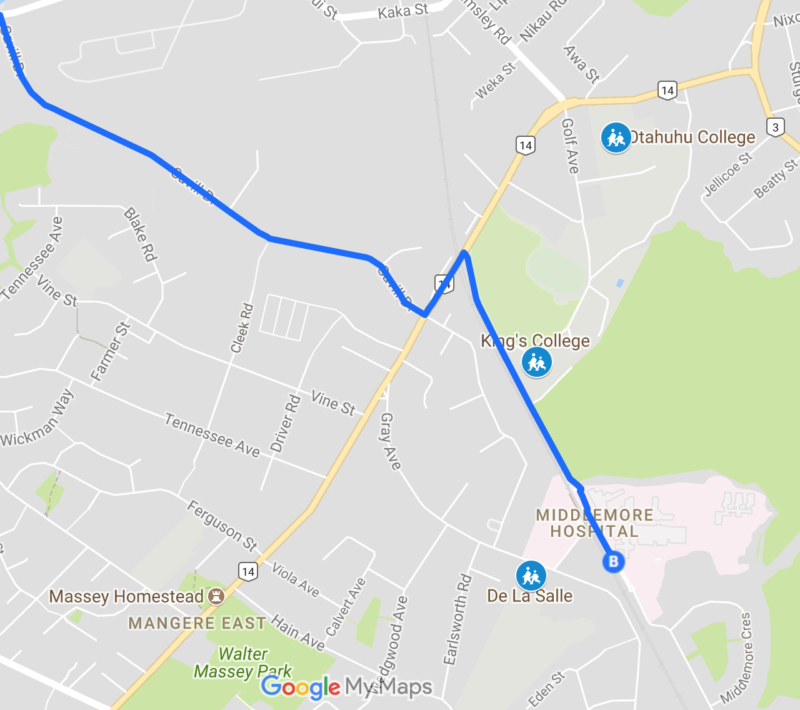
By the time I’m at work, I have passed from leafy suburbs to South Auckland, via less than ideal bike riding conditions on arterial roads, through a few fabulous spaces, and largely along streets with zero bike infrastructure, let along safe and fit for purpose bike infrastructure. This hardly seems equitable, sensible, or defensible.
I’ve been riding to work for years, and I have heard a lot of talk about bike paths and infrastructure for active transport, but I don’t see any in the south.
Come on, Auckland Transport – please stop just talking, and make it safer for everyone biking in South Auckland.
–Rob Burrell
